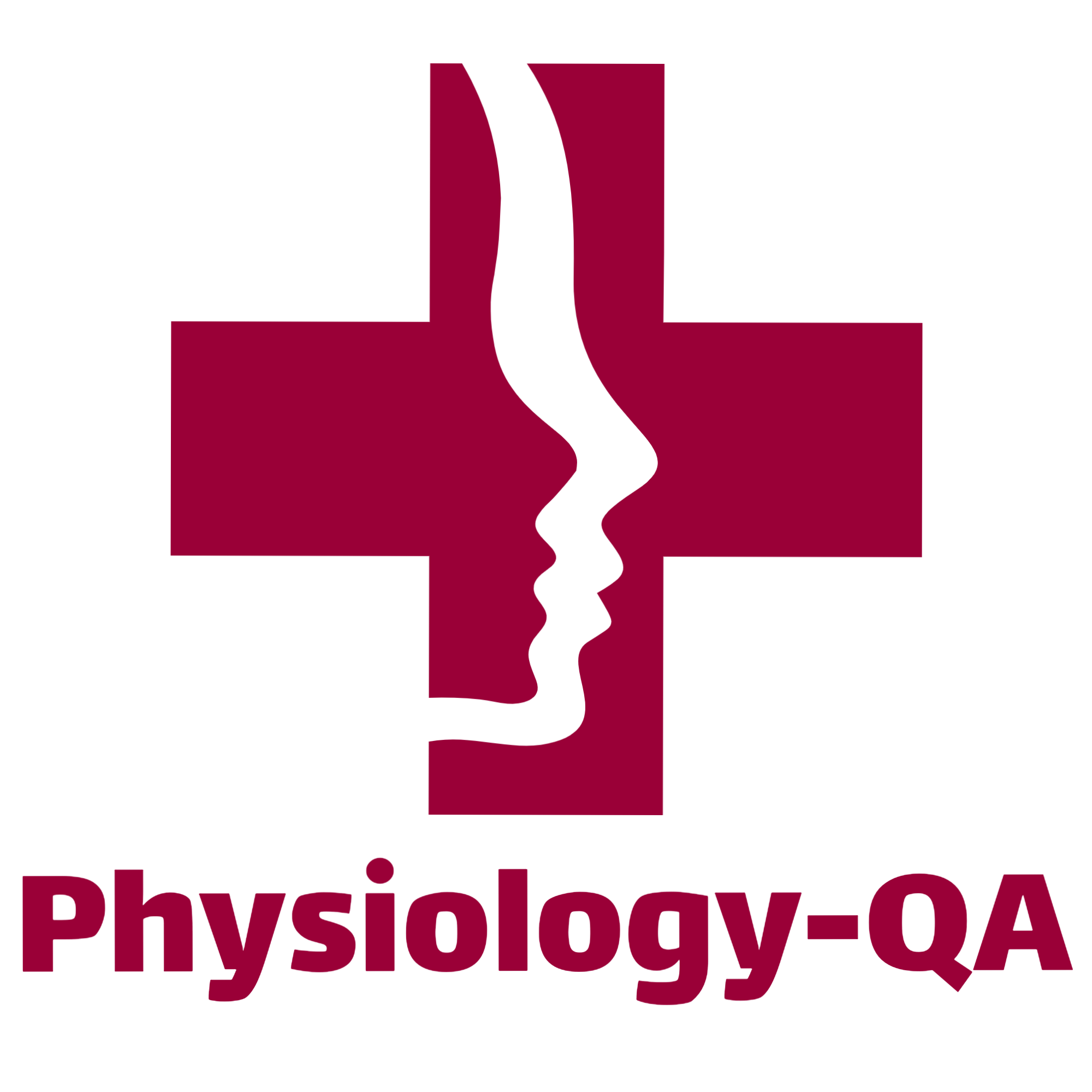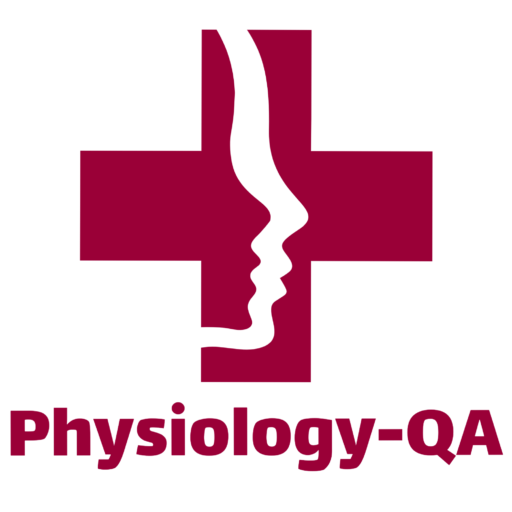What are membrane transport proteins
1. Channels: eg.Ion Channels (Ligand gated, Voltage gated, Mechanically gated) simple diffusion
2. Carriers: a. Uniporters (facilitated diffusion), b. Pumps (primary active transport), c. Symporters (se co-active transport), d. Antiporters (secondary counter-active transport)
3. Pores: rare, eg. Aquaporins (Water Channels) by ADH at DCT & CT (osmosis),
What are Transport mechanism across the cell membrane
1) Passive transport- Passive transport is the transport of a substance along electrochemical gradient(downhill).It does not require energy.
Types are:-
a. Simple diffusion
b. Facilitated diffusion
c. Osmosis
2) Active transport- Active transport is the transport of a substance against electrochemical gradient(uphill). It requires energy.
a. Primary active transport
b. Secondary active transport
3)Special types of Active transport(Macro molecules)
a. Endocytosis
b. Exocytosis
what is passive transport
Passive transport is a type of cellular transport mechanism that does not require energy to move molecules or ions across a cell membrane. Instead, passive transport relies on the concentration gradient of the molecule or ion to drive its movement across the membrane, from an area of high concentration to an area of low concentration.
There are two major types of passive transport:
- Diffusion: Diffusion is the movement of molecules or ions from an area of high concentration to an area of low concentration, driven by the concentration gradient of the molecule or ion. Diffusion can occur across the cell membrane or through protein channels, such as aquaporins or ion channels, which facilitate the movement of specific molecules or ions.
- Osmosis: Osmosis is a type of diffusion that involves the movement of water molecules across a selectively permeable membrane, from an area of high water concentration to an area of low water concentration. Osmosis is driven by the concentration gradient of water, which is affected by the concentration of solutes on either side of the membrane.
Passive transport is a critical mechanism for maintaining homeostasis in cells, as it allows the movement of essential molecules, such as oxygen and nutrients, into the cell and the removal of waste products and excess ions from the cell.
Simple diffusion
Diffusion is the net movement of molecules (or ions) from a region of their high concentration to a region of their lower concentation.
CHARACTERISTIC FEATURES:-
• The molecules move down a concentration gradient.
• Requires no energy
• Molecules move about randomly by kinetic energy
• As a result of diffusion, molecules reach equilibrium (no net movement of molecules from either side).
FACTORS AFFECTING
Simple diffusion through biological cell membrane is directly proportional to-
i) Gradient (concentration/electrical/pressure),
ii) Surface area of the membrane (SA),
iii)Lipid solubility (S) example – O2, CO2 , N2 and alcohols)
iv) Kinetic energy
inversely proportional to
i) Thickness of the membrane (T),
ii)Molecular weight (MW).
(Its according to fick’s law)
Example-
Fick’s law of diffusion
J= DA(C1-C2)/ T
J = Rate of Diffusion
T = Thickness of membrane
CI-C2 = concentration gradient
D = Diffusion coefficient
A = Cross sectional area
What is Facilitated diffusion
Substances move from high concentration to low concentration through a carrier protein.
ATP is not required.
Features of Facilitated Diffusion
• Occurs along the concentration gradient
•Does not require energy
•Involves carrier protein
• Carrier proteins are highly specific for molecules.
•Have saturation point.
Diffusion increases with increase in concentration gradient in simple diffusion whereas in facilitated diffusion, diffusion depends on availability of carrier proteins
When the carrier proteins are saturated, facilitated diffusion stops
• Competitive inhibition occurs
Example
Glucose transport:Glucose transporters (GLUTS)
What is OSMOSIS
Definition: The passive movement of water from a low concentration to high concentration through a semipermeable membrane, which is impermeable to solute separates the two solutions is called osmosis
• Osmotic pressure is the force required to stop the movement of water through the semipermeable membrane.
Osmotic pressure depends upon the number of osmotic particles per unit volume of fluid.
What is OSMALARITY
Osmolarity
Number of osmotically active substances per litre of a solution .
Normal plasma osmolarity is around
300 mosm/L.
Plasma osmolarity is calculated as follows:
2(Na+)+ 0.05 (glucose) + 0.36 (blood urea nitrogen).
Unit of osmolarity: mosm/L of solvent
Unit of osmolality: mosm/kg of solvent
what is active transport
Active transport is a type of cellular transport mechanism that requires energy to move molecules or ions across a cell membrane, against their concentration gradient (from an area of low concentration to an area of high concentration). This means that active transport enables cells to accumulate molecules or ions inside or outside the cell, depending on the needs of the cell.
There are several types of active transport, which differ in terms of the mechanism by which energy is used to move molecules or ions across the cell membrane. Some of the major types of active transport include
- Primary active transport: In primary active transport, energy is directly used to move molecules or ions across the membrane. This energy is typically in the form of ATP, which is hydrolyzed by specific transport proteins to drive the movement of the molecules or ions against their concentration gradient. Examples of primary active transport include the sodium-potassium pump, calcium pump, and proton pump
- Secondary active transport: Secondary active transport involves the use of an electrochemical gradient established by primary active transport to drive the movement of other molecules or ions against their concentration gradient. For example, the sodium-coupled glucose transporter in the small intestine uses the energy from the sodium gradient established by the sodium-potassium pump to transport glucose into the cell.
Vesicular transport: Vesicular transport involves the formation of vesicles or membrane-bound compartments that can transport molecules or ions across the cell membrane. This process requires energy in the form of ATP or GTP (guanosine triphosphate) and is often used for the uptake or secretion of large molecules or particles. Examples of vesicular transport include endocytosis and exocytosis.
what is secondary active transport
Secondary active transport is a type of cellular transport mechanism that uses the energy stored in the electrochemical gradient of one molecule or ion to move another molecule or ion against its concentration gradient. In other words, secondary active transport uses the energy from the movement of one molecule or ion down its concentration gradient to move another molecule or ion up its concentration gradient.
In secondary active transport, the energy stored in the electrochemical gradient of one molecule or ion is usually generated by primary active transport, which uses ATP to establish the gradient. The transport of the second molecule or ion can then be driven by the energy stored in the electrochemical gradient of the first molecule or ion.
Overall, secondary active transport is an important mechanism for transporting molecules or ions against their concentration gradients, allowing cells to maintain homeostasis and carry out essential functions.
Types of secondary active transport
• Co-transport (symport)
• Counter transport (Antiport)
Co – transport: Both the substances are transported in the same direction
e.g.-
1.Sodium – Glucose Co-transport(SGLT)
2.Sodium-Amino acid Co-transport
Counter transport: Two substances are transported. One substance is transported in opposite direction to the other substance e.g.-
1. Sodium-Hydrogen counter transport
2.Sodium- Calcium counter transport
Note: Clinical use of secondary active transport:
This is used in oral rehydration therapy which helps to restore the volume of body fluid which is lost in dehydration
ORS (Oral Rehydration Solution)
what is primary active transport
The energy is derived directly from the breakdown of ATP or some high- energy phosphate compound
Examples:
• Sodium-potassium ATPase pump
• Calcium ATPase pump
• Potassium-Hydrogen ATPase pump
#Sodium-potassium pump (a specific case of active transport)
Structure
α Subunit (100,000 MW)
β Subunit (55000 MW)
Intracellular sites:
1. Sodium binding site
2. ATP binding site
3. Phosphorylation site
Extracellular sites
1. Potassium binding site
Mechanism of the pump:
• Cytoplasmic Na+ binds to the sodium-potassium pump.
• Na+ binding stimulates phosphorylation by ATP.
• Phosphorylation causes the protein to change its shape. Na+ is expelled to the outside.
• K+ binds on the extracellular side and triggers release of the phosphate group
• Loss of the phosphate (dephosphorylation) restores the protein’s original share.
• K+ is released, and the cycle repeats
• Three sodium ions are pumped outside where as two potassium ions are pimped inside
Functions of Na+ – K+ Pump
1. Maintains Na+ & K+ gradients across the membrane essential for genesis of RMP (Resting
Membrane Potential).
2. Maintains Cell volume: If the pump is paralyzed, sodium ions which enter the cell remain inside & water follows, causing swelling and rupture of cells.
3. Important role in secondary active transport.
4. Maintains high intracellular K+ which is important for protein synthesis
# Calcium ATPase pump
i) It is one of the ATPases other than Na – K+ ATPase. It is present in the sarcoplasmic reticulum of muscle cells, which maintains the intracellular ionic Ca2+ concentration below 0.1 mmol/L.
(ii) It is also located in the cell membrane and in many cell organelle membranes. In the cell membrane, the direction of Ca2+ transport is from cytoplasm to ECF. In cell organelle membranes it is from cytoplasm into the organelle lumen. This is why the cytoplasm of most cells has a very low Ca2+ concentration.
Differentiate between active and passive transport
Active Transport
1. Transport is against concentration gradient
2. Incurs expenditure of energy
3. Shows saturation
4. Specificity: Specific for particular molecules
5. Shows competitive inhibtion; related molecules can Inhibit transport of another molecule by this process
Passive Transport
1. Transport is along the concentration gradient
2. Energy is not required
3. No saturation; process continues till the equilibrium is obtained
4. No such specificity
5. No such competitive Inhibition is seen
Differentiate between graded and action potential
Graded potential
- Occur in dendrites and cell body of neurons
- Localized changes in membrane potential
- Magnitude of change can vary in amplitude
- Can be depolarizing or hyperpolarizing
- Can summate over time or space
- Do not exhibit refractory period
- Do not propagate along the axon
Action potential
- Occur in axons of neurons
- Rapid, all-or-nothing depolarization and repolarization of the membrane potential
- Magnitude of change is consistent in amplitude
- Always depolarizing
- Cannot summate over time or space
- Exhibits refractory period
- Propagates along the length of the axon
Differentiate between primary and secondary active transport
Primary Active Transport
- Requires energy from ATP hydrolysis
- Pumps ions or molecules against their concentration gradient
- Examples include the sodium-potassium pump and the calcium pump
- Transport protein acts as an enzyme
Secondary Active Transport
- Does not directly require ATP hydrolysis, but relies on the electrochemical gradient established by primary active transport
- Couples the movement of one solute with the movement of another solute down its concentration gradient
- Examples include the sodium-glucose cotransporter and the sodium-calcium exchanger
- Transport protein acts as a co-transporter

